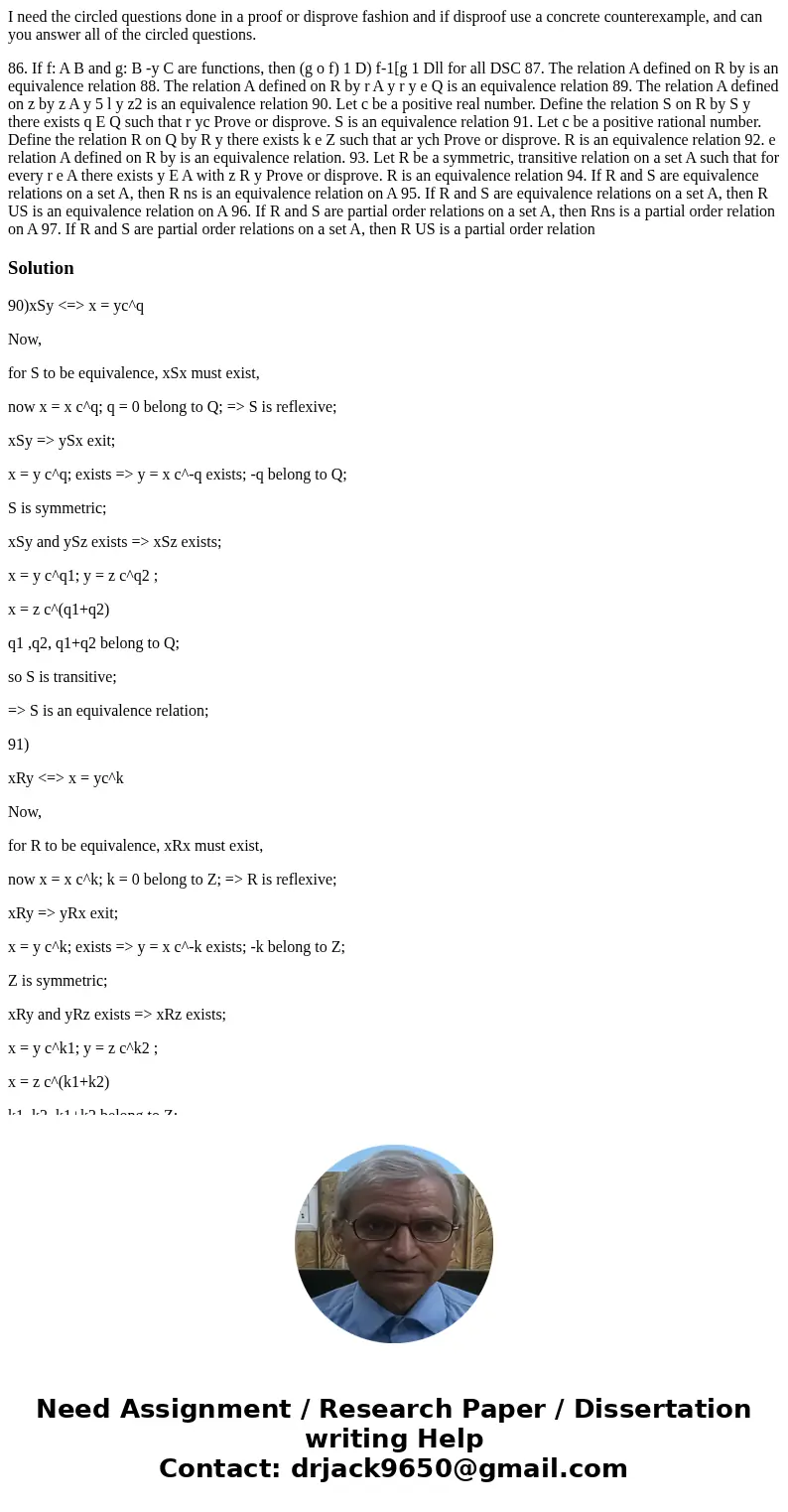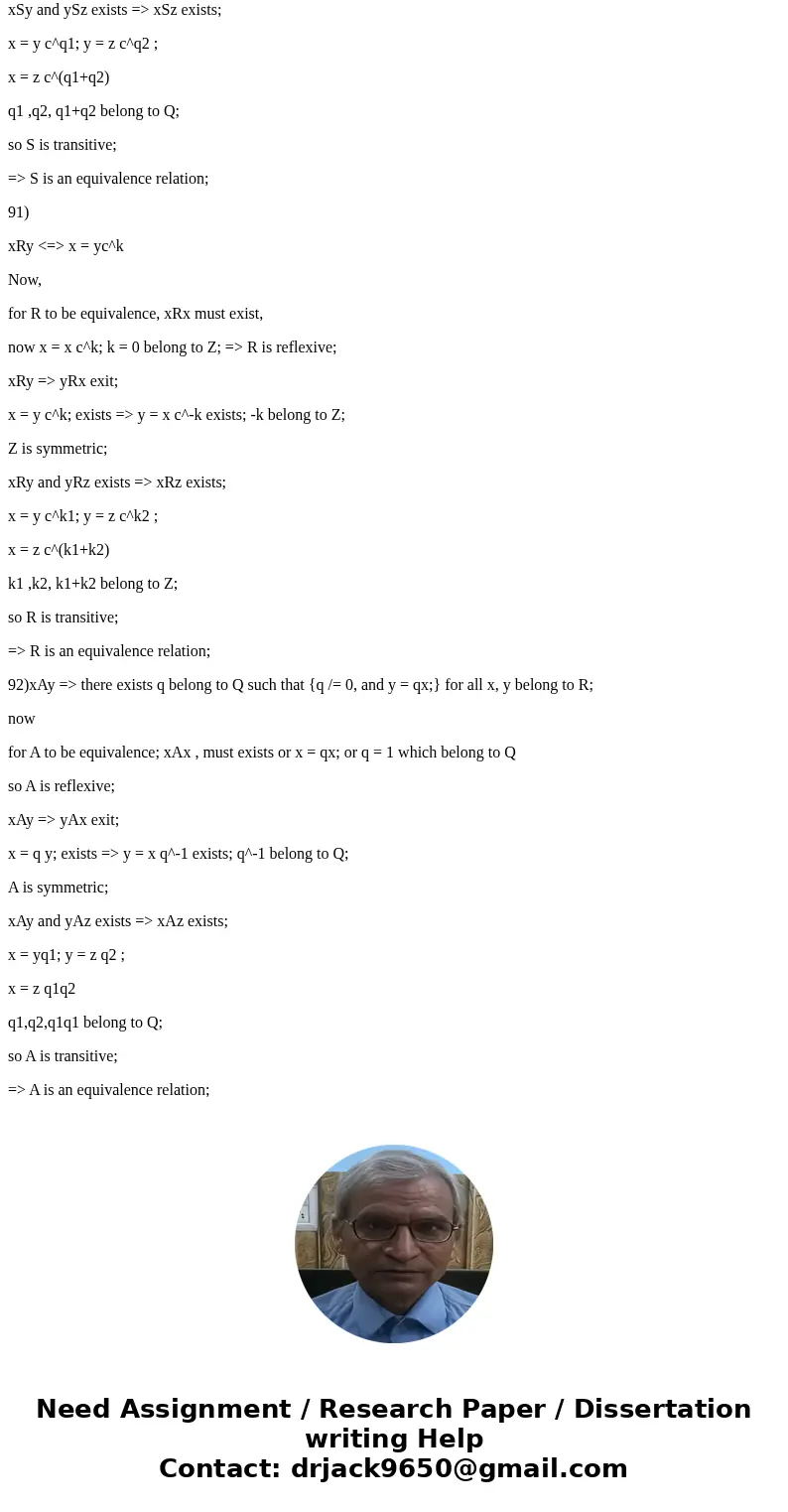I need the circled questions done in a proof or disprove fas
I need the circled questions done in a proof or disprove fashion and if disproof use a concrete counterexample, and can you answer all of the circled questions.
86. If f: A B and g: B -y C are functions, then (g o f) 1 D) f-1[g 1 Dll for all DSC 87. The relation A defined on R by is an equivalence relation 88. The relation A defined on R by r A y r y e Q is an equivalence relation 89. The relation A defined on z by z A y 5 l y z2 is an equivalence relation 90. Let c be a positive real number. Define the relation S on R by S y there exists q E Q such that r yc Prove or disprove. S is an equivalence relation 91. Let c be a positive rational number. Define the relation R on Q by R y there exists k e Z such that ar ych Prove or disprove. R is an equivalence relation 92. e relation A defined on R by is an equivalence relation. 93. Let R be a symmetric, transitive relation on a set A such that for every r e A there exists y E A with z R y Prove or disprove. R is an equivalence relation 94. If R and S are equivalence relations on a set A, then R ns is an equivalence relation on A 95. If R and S are equivalence relations on a set A, then R US is an equivalence relation on A 96. If R and S are partial order relations on a set A, then Rns is a partial order relation on A 97. If R and S are partial order relations on a set A, then R US is a partial order relationSolution
90)xSy <=> x = yc^q
Now,
for S to be equivalence, xSx must exist,
now x = x c^q; q = 0 belong to Q; => S is reflexive;
xSy => ySx exit;
x = y c^q; exists => y = x c^-q exists; -q belong to Q;
S is symmetric;
xSy and ySz exists => xSz exists;
x = y c^q1; y = z c^q2 ;
x = z c^(q1+q2)
q1 ,q2, q1+q2 belong to Q;
so S is transitive;
=> S is an equivalence relation;
91)
xRy <=> x = yc^k
Now,
for R to be equivalence, xRx must exist,
now x = x c^k; k = 0 belong to Z; => R is reflexive;
xRy => yRx exit;
x = y c^k; exists => y = x c^-k exists; -k belong to Z;
Z is symmetric;
xRy and yRz exists => xRz exists;
x = y c^k1; y = z c^k2 ;
x = z c^(k1+k2)
k1 ,k2, k1+k2 belong to Z;
so R is transitive;
=> R is an equivalence relation;
92)xAy => there exists q belong to Q such that {q /= 0, and y = qx;} for all x, y belong to R;
now
for A to be equivalence; xAx , must exists or x = qx; or q = 1 which belong to Q
so A is reflexive;
xAy => yAx exit;
x = q y; exists => y = x q^-1 exists; q^-1 belong to Q;
A is symmetric;
xAy and yAz exists => xAz exists;
x = yq1; y = z q2 ;
x = z q1q2
q1,q2,q1q1 belong to Q;
so A is transitive;
=> A is an equivalence relation;


 Homework Sourse
Homework Sourse